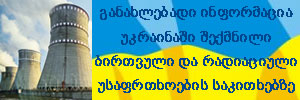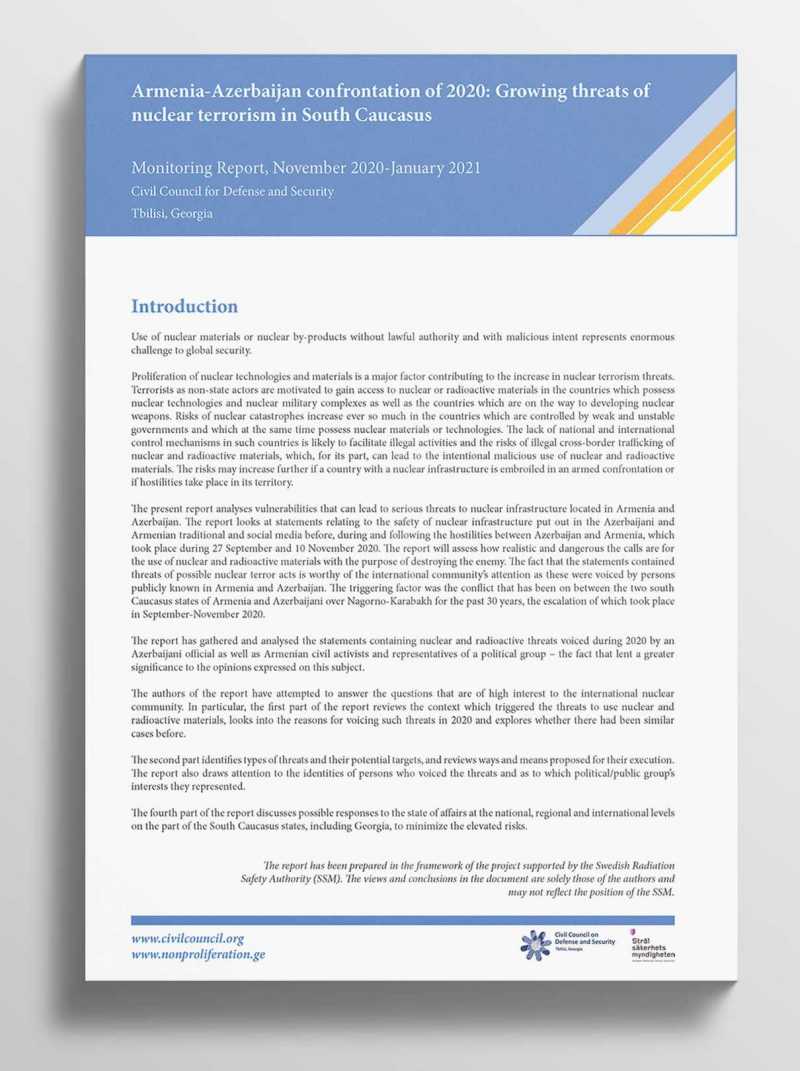Use of nuclear materials or nuclear by-products without lawful authority and with malicious intent represents enormous challenge to global security.
Proliferation of nuclear technologies and materials is a major factor contributing to the increase in nuclear terrorism threats. Terrorists as non-state actors are motivated to gain access to nuclear or radioactive materials in the countries which possess nuclear technologies and nuclear military complexes as well as the countries which are on the way to developing nuclear weapons. Risks of nuclear catastrophes increase ever so much in the countries which are controlled by weak and unstable governments and which at the same time possess nuclear materials or technologies. The lack of national and international control mechanisms in such countries is likely to facilitate illegal activities and the risks of illegal cross-border trafficking of nuclear and radioactive materials, which, for its part, can lead to the intentional malicious use of nuclear and radioactive materials. The risks may increase further if a country with a nuclear infrastructure is embroiled in an armed confrontation or if hostilities take place in its territory.
The present report analyses vulnerabilities that can lead to serious threats to nuclear infrastructure located in Armenia and Azerbaijan. The report looks at statements relating to the safety of nuclear infrastructure put out in the Azerbaijani and Armenian traditional and social media before, during and following the hostilities between Azerbaijan and Armenia, which took place during 27 September and 10 November 2020. The report will assess how realistic and dangerous the calls are for the use of nuclear and radioactive materials with the purpose of destroying the enemy. The fact that the statements contained threats of possible nuclear terror acts is worthy of the international community’s attention as these were voiced by persons publicly known in Armenia and Azerbaijan. The triggering factor was the conflict that has been on between the two south Caucasus states of Armenia and Azerbaijani over Nagorno-Karabakh for the past 30 years, the escalation of which took place in September-November 2020.
The report has gathered and analysed the statements containing nuclear and radioactive threats voiced during 2020 by an Azerbaijani official as well as Armenian civil activists and representatives of a political group – the fact that lent a greater significance to the opinions expressed on this subject.
The authors of the report have attempted to answer the questions that are of high interest to the international nuclear community. In particular, the first part of the report reviews the context which triggered the threats to use nuclear and radioactive materials, looks into the reasons for voicing such threats in 2020 and explores whether there had been similar cases before.
The second part identifies types of threats and their potential targets, and reviews ways and means proposed for their execution. The report also draws attention to the identities of persons who voiced the threats and as to which political/public group’s interests they represented.
The fourth part of the report discusses possible responses to the state of affairs at the national, regional and international levels on the part of the South Caucasus states, including Georgia, to minimize the elevated risks.



